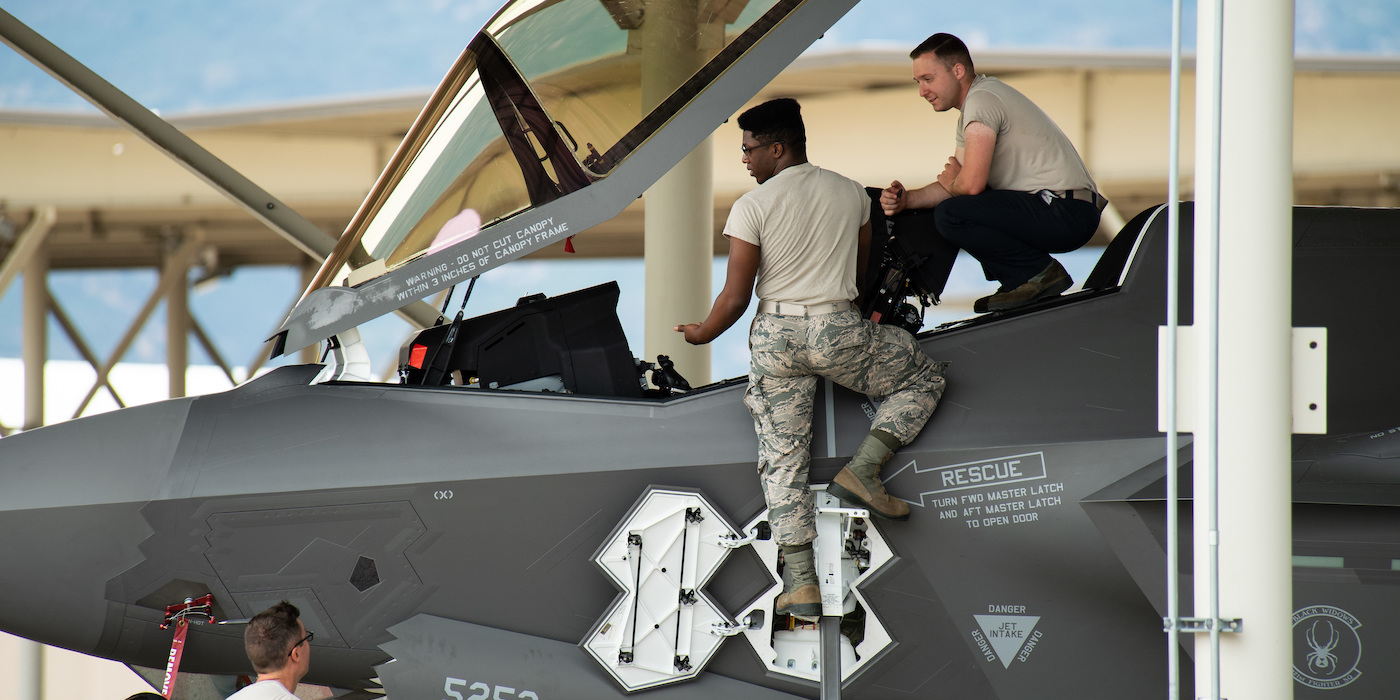- According to a report from the Project on Government Oversight, the F-35 Lightning II test fleet was only 8.7% fully mission capable in June.
- The F-35 has been plagued with problems, including issues landing at high temperatures and loss of cabin pressure.
- Former Secretary of Defense Jim Mattis called for an 80% mission-capable rate across the F-35, F-22, F-16, and F-18 fleets by September.
- Visit Business Insider’s home page for more stories.
The US military’s F-35 Joint Strike Force program may be in trouble due to its abysmal mission readiness rates, according to a report from the Project on Government Oversight (POGO).
POGO’s report is based on a chart from the Joint Program Office’s Integrated Test Force showing that the 23-aircraft test fleet had a “fully mission capable” rate of 8.7% in June – an improvement over its May mission-capable rate of 4.7%. The average rate was just 11% for December 2018 through June.
The F-35 program has been plagued with problems; loss of cabin pressure and aircraft control and serious issues in both hot and cold conditions are just a few of the challenges facing the Pentagon’s most expensive weapons system.
Such low rates can typically be attributed to a lack of spare parts or one of the many previously reported problems. The POGO report specifically points to issues with the aircraft’s Distributed Aperture System, which warns F-35 pilots of incoming missiles. While the aircraft can still fly without the system being fully functional, it’s a necessary component in combat.
Read more: The US Air Force's secretive new B-21 stealth bomber will take to the skies soon
The Lightning II test fleet is actually performing far worse than the full F-35 fleet, but even that rate is less than ideal - it was only 27% fully mission capable between May and December 2018, according to Flight Global.
In October 2018, then-Secretary of Defense Jim Mattis called for 80% mission capability for the F-35, F-22, F-16, and F-18 fleets by September, Defense News reported at the time.
But Air Force Times reported in July that the Air Force's overall aircraft mission-capable rate fell eight percentage points from 2012 to 2018, dipping below 70% last year. Col. Bill Maxwell, the chief of the Air Force's maintenance division, told Air Force Times that any downward trend in readiness is cause for concern but that the overall readiness rate was a "snapshot in time."
The Pentagon is set to decide whether to move to full-rate production in October, but given low readiness rates, it is doubtful that testing will be completed by then. According to POGO, a major defense acquisition like the F-35 can't legally proceed to full-rate production until after testing is completed and a final report is submitted.
The Joint Strike Fighter program declined INSIDER'S request for comment on the POGO report.

